| This coming year, I'll be working with North Lanarkshire's Stage 2 and Stage 3 active literacy phonics programmes. So I'm trying to get resources created for both stages while I have a bit of extra (!) time over the summer. Stage 3 begins by reviewing the 'UE', 'AW' and 'OI' phonemes, all of which are first introduced during the Stage 2 programme. So here are wall words for UE (you can also click on the picture of the front cover, and that will take you to the correct file as well). Hope you find them useful! For a complete list of all of the literacy resources I've created, please hover over the 'Resources' header, then use the 'Literacy' drop down menu to go directly to a page with links to all available files. |
|
0 Comments
 The next 2 sets of Wall Words/flashcards are finished and ready for anyone to download and use - this file contains TH and NG flashcards. I hope you find them useful! In most of these sets, I've tried to find at least 12 age-appropriate words containing the target phoneme. I've also tried to divide them into 6 easier and 6 trickier words (in the file, I've arranged the words in order...roughly...from easiest to hardest). In the NG set, you'll find 4 verbs with the 'ing' ending - teaching verb endings is a great way to quickly expand decoding skills (kids get such a boost when they can read 'long words' like 'sitting' easily!). I use these cards to introduce a new phoneme on Monday - we read the flashcards together as a class, and then I always have plenty of volunteers to help me transfer the word cards onto our 'Word Wall'. As you can see in the picture below (it's a screenshot of a page from the file you'll download), I always have a 'Phoneme (dipthong for American readers) Card' that gives the phoneme and a picture hint. All of the word cards are then posted under/around the Phoneme Card (depending on how crowded my wall is, and how many word cards I want to put up).  These cards then stay up all week (and beyond), for children to use as a resource for various phoneme-related tasks they are given throughout the week. I like to leave at least some of the cards up over the longer term - children need lots of repetition/reminders before some of the trickier phonemes move into long-term memory. Depending on your own wall space, and display policies at your school, you can chose to leave all or only a few word cards up, or you can transfer the Phoneme Card onto a 'Phoneme Pocket' (also attached to the wall) and put all of the word cards into the pocket - that way children can go and get them when/if they need them, but it takes up much less space than displaying everything. Below, you can see all of the TH flashcards. 'This' and 'that' are difficult words to match with pictures - but so important for our kids to know to facilitate fluent reading and writing. The NG words are laid out similarly.
Please try them out and let me know what you think! And if you have any teacher friends who would find these useful, please send them over to my blog as well. :-) I'll be adding more Wall Words as I get them converted into PDFs - why not bookmark or favourite this site, so you can get back easily to check what's available? 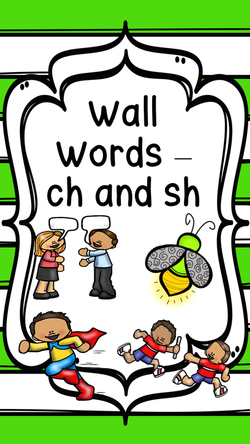 This is taking much longer than I anticipated. I originally made all of my wall words in Microsoft Word (see my previous post, in which I was very happy they were all finished!). AFTER I finished all Stage 2 and Stage 3 words, however, I realised that I could only find directions for converting Powerpoint files into the right kind of files for uploading to the internet (e.g., files in which images are 'flattened' or secured in the document so that they can't easily be copied and pasted into other documents). Nothing about converting Word files the same way. So....I spent yesterday and today figuring all of this out, and converting my CH and SH wall words into a PDF files (this is more complicated than it should be, my husband tells me). I think my margins are slightly screwy in this document, but I don't think that will affect the flashcards/wall words. You can click on the above link or the image to access the file, and I'll also put a link to the document in the Resources section. If you download these and use them, please do let me know how you get on and if there are any problems with printing, margins, etc. that I need to sort out. Hope these save you some time! These phonemes (dipthongs for any American readers) are first learned in Primary 1 in the North Lanarkshire Active Literacy programme, and then they are reviewed at the beginning of Primary 2. Along with having a wonderful visitor (my cousin) from the States this week, I've been hard at work finishing off Stage 2 and 3 phoneme flashcards/wall words. I just finished them all today (and I must say - I'm beginning to have quite an addiction to cute clipart from Teachers Pay Teachers!). Hopefully this weekend, or perhaps early next week, I'll be able to look into what steps I need to take to convert my Word files into files I can post on the Internet.
If you are working with North Lanarkshire's Active Literacy programme in the Infant department, please do check back!  The images to the left will be familiar to anyone working with North Lanarkshire's Active Literacy programme, I'm sure (although the book covers have changed). Having taught Primary 1 for the last couple of years, I have Active Literacy Stage 1 resources covered. However, since I'm moving to Primary 3 next year, I'll need resources for Active Literacy Stages 2 and 3 - which is a lot of resource creation! When I'm teaching a new phoneme, I like to have flashcards with that week's phoneme that the kids can read as a class as part of our introductory mini-lesson on that phoneme. These flashcards then go up on our 'Phoneme Word Wall', as a permanent reference resource. I give the class different activities based on that week's 'Wall Words' to reinforce phoneme learning throughout the week - so I get a lot of mileage out of these flashcards. Because I use them so much, I want the flashcards to look good and to be appealing to the kids. I also want to make sure they are accessible to ALL of the children in the class, so I find pictures to go with each word (there are a few exceptions - I haven't found pictures for words like 'have' and 'live', I'm afraid). Once I have all of the flashcards done for the Phoneme Wall, I'm planning to turn the wall words into 'bean bag' cards for our bean bag game (which I'll hopefully tweak a bit for the older children, to make it a bit more challenging...that's still a job for the future, though). I'm currently making the flashcards for Week 30 of Stage 3 - it's such a good feeling to know that once they are all made, printed out, laminated and cut out (OK - so there is quite a bit of work still to be done!), my phoneme programme will be good to go for the year. That should free up quite a few Sunday hours throughout the school year! After Stage 3 is finished, I'll move back to Stage 2. My technical consultant (my husband!) is home from Africa, so hopefully he'll be able to help me convert all of my files so that I can post them on-line for others to use. Under the terms of use for much of the clipart I'm using for the pictures, all files must be 'flattened', so that the clipart can't be easily extracted. Please do keep checking back, though, as I'm hoping to start getting files up in the next week or so... One of the very earliest, simple strategies children learn when they are beginning to add and subtract is to 'count on and back' from a given number. When they are adding, this is a step on from having to count all of the items in both sets. For subtraction, it is a simple way to begin to move away from always needing the concrete objects in front of them (although I definitely make sure the concrete manipulatives are still there to be used - kids need lots and lots of experience with them in order to internalise what they are actually doing when they add and subtract using numerals). So - while this is not a substitute for lots of hands on practice with concrete objects that they are adding together and taking away from, I've found that using fist numbers gives children an easily accessible way to solve simple addition and subtraction problems. Use along side of lots of concrete practice, I've found it can help get kids excited about their ability to 'do math'. Here's what we do: If we are solving the following sum: 5 + 1 = , we would put the number '5' in our fist (i.e., make a fist and say 'five'), then put up 1 finger as we count on to the next number ('six'). Thus, 5 + 1 = 6. When I'm doing this with Primary 1s, we always start with adding on and taking away 1, referring both to number lines and using concrete manipulatives while we also count on our fist. That way, they have the chance to connect this early computation strategy with the concrete experience of adding and taking away. Once they have mastered adding on 1, we move to adding on 2. So 5 + 2 would be solved by 'putting '5' in our fist' (e.g., making a fist and saying 'five'), then counting on '6, 7' as we raise 1, then 2 fingers. I always make a big deal about NOT raising any fingers when we say our fist number - that is the number we are starting with, so we haven't added anything yet - so no fingers allowed! The kids always find this quite funny...but they tend to remember. Check out the JUMP teachers' materials for a fuller explanation (you'll need to register, but registration is free and well worth a few minutes of your time).  I'm currently reading The Myth of Ability, and I'll be posting my thoughts over the next few weeks under 'Books' here on my blog. The first post is already up, so please head over and have a look! John Mighton, the author of the book, is the founder of the JUMP Math programme in Canada. I've used many of his ideas in the classroom, and I've found that they empower children. They take a problem that might seem unsolvable and they give a child a way to approach it. One of the simplest of his ideas is giving children a structured way to 'count on and back' (including counting in multiples), using their fingers. We call it 'using fist numbers' (I'll write more about it in another post). Now - this isn't a strategy you'd want your children to be using for the rest of their mathematical career. But it works - it is a reliable and efficient way to solve simple problems (while we continue to work on automatic fact fluency), as well as a great way 'in' to harder problems. The sense of achievement children get, both when they have a 'tried and true' strategy for solving simple problems and when they can use that strategy to work with 'big' numbers, shouldn't be underestimated. Several of my Primary 1s, for example, were able to use this 'counting on' strategy to accurately add sums like 22 + 15, without having been asked to tackle sums like that before. Again - I'd rather see them move to more efficient strategies (like those suggested in Number Talks) - but you should have seen the smiles of delight and the cries of 'This is easy!' when they managed to solve this difficult sum all by themselves...  Only my youngest went into school with me today, but we still managed to get just about everything organised and stored in the proper place. Above is the classroom as it currently is (yeah!). I've had to take a picture, though, as weeks 4 & 5 of the summer holiday are 'deep clean' weeks - so when I arrive back at the end of week 6 to start back to school, all of the furniture will be shoved into the centre of the room. This picture should help me to put everything back where it belongs. It will also remind me that I need to buy one more red utensil drainer/pencil holder for my last table. In the back corner, I've organised our library. I came home with quite a few books, and I need to take some books from home (Magic Tree House, Flat Stanley, Junie B. Jones) into school. A few labels still need to be made and attached, but it's in fairly 'P3 ready' shape, I think. I'll have to see if I can scrounge a few cushions from somewhere as well. These will be our reading trays. I normally name reading groups for a fruit, then colour code the fruit to the tray (e.g., red strawberries) to make it easy for kids to remember where to put their reading books and find their writing/reading jotters. Each child will have their own grey tray (below the reading trays). The leftover trays will store various supplies. We also have a 'Maths Area', which kids will be able to access for supplies/math supports/manipulatives that they might need. So far, there are number cards, playing cards, dominoes, 3 different kinds of dice, buggy rekenreks, number lines, 100/120 squares, counting/connecting cubes and counters. There are also some shape building/tiling games that my P1s loved last year, and that I'm sure will be a favourite of next year's P3s as well. I'm planning to put some magnetic base 10 materials on the small whiteboard, and the cupboard underneath the board holds more maths games. One of the only things on my wall so far are the maths rotation boards (I'm assuming I'll have 3 maths groups, like last year - I guess we'll start with that, and adjust if we need to). I think I'll use my Ikea Trofast unit (below) for 'Fast Finisher' tasks. I bought this 'All Done! Now What?' set from Miss Kindergarten Love on TPT, and it has lots of different tasks for kids to complete. The Trofast unit should be just the thing to organise everything - and it will be right there, after they hand in their 'Finished Work'. 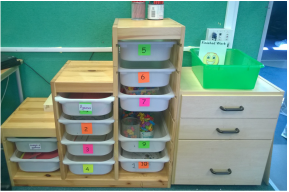 At the moment, the unit is still filled with various maths manipulatives and literacy games from this past year. Yes, I mixed maths and literacy resources! I imagine that would drive some teachers up the wall. I have to say - I'm not naturally organised, but I'm learning that I need to be to teach. This organisation thing is a work in progress for me, but it's slowly getting there (which is a good thing, as I'm now onto my 4th year of teaching!). OK - so this is what the classroom looked like when we arrived this morning (as I said yesterday - it always gets worse before it gets better!). You don't quite realise how much stuff you have until you are in the process of moving rooms and reorganising it all.
this proved to be the least popular job on offer, and all three kids moved on to other things. I have a feeling I'm going to need to bring the remaining sets home myself and sort through them while watching something on TV. I briefly considered bringing them home tonight, but couldn't quite work up the necessary enthusiasm!  While the other 3 kids flitted between sorting number sets and various other odd jobs, my oldest patiently worked her way through a TON of cutting out. Here she is, cutting out 'Reading Comprehension Strategy' cards - I now have enough to make reminder sets for every child in my class next year. While she was doing this, a couple of my other kids photocopied and cut out our spelling word homework lists for next year - so all of these pre-prepared literacy resources are sitting in the top of my literacy cupboard, ready to go come August (see the picture to the right). What a great feeling (thanks, kids!). For anyone who is interested in the reading strategies resource my daughter prepared for me, I am using Reading Comprehension Strategies by A Teachable Teacher. She has turned each strategy into a cute animal (for example, we have 'Picturing Peacock', who reminds us that when we visualise our story, that helps us to remember it). The resource I bought also includes classroom sized posters, graphic organisers for each of the strategies, and photocopiables to use in an interactive literacy notebook. I'm looking forward to trying this out next year with my class - I'll let you know how I get on! We were in school from just before 10 to a bit after 4, with a break for lunch at Subway/Ashvale in Portlethen. Cupboards and resources are much more organised, and the classroom is looking a bit better. Still more to do (and we haven't even started on the library), but I think I'll give the kids a day off tomorrow. We're planning to watch Jurassic Park tonight in preparation for going to see Jurassic World tomorrow afternoon. Here is a picture of the classroom as we left it this afternoon:
and this is what my classroom looked like when we (my 3 helpers/daughters and I) arrived this morning. Because what else do teachers do on their first official day off - but go back to school to start getting ready for the next year?! To be fair, there were only 2 teachers in today. And I'm getting this done now because we are away right at the end of our summer break, so I can't afford to put it off. But I know many of our staff team will be in and around the school over the next couple of weeks, getting everything sorted out.  Our school is open plan. This was the dividing line between my classroom and the next one over. We expended quite a bit of energy getting wardrobes moved, so that the classes will be a bit more separate (the second classroom was used as a resource room last year, so it was left more open). We had to leave quickly (we remembered that 2 girls had trampolining this afternoon!), so I haven't taken in any 'after' pictures yet - but I'll add those tomorrow.
While some of us shifted furniture and tried to find homes for various resources, another daughter was busy at the laminator - and once everything was laminated, she kindly cut out all the new labels and put them into sets for me. How do you do this job when you don't have family members willing to help?! We're back to the school early tomorrow morning (if I can get kids moving before 9, that is!). We actually left the room worse than we found it - but that's normal, I think. You have to break a few eggs to make an omelette. :-) I'll post more pictures tomorrow of our 'work in progress', as well as final pictures once the classroom has been sorted.
|
Categories
All
About MeI have taught from P1-P5 (K-4th grade). You'll find a variety of resources and ideas appropriate for these year groups as you explore this blog. I'm glad you are here and I hope you find activities, ideas or resources that are useful in your own class. Archives
July 2020
|

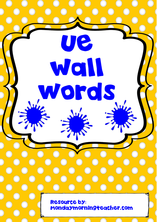




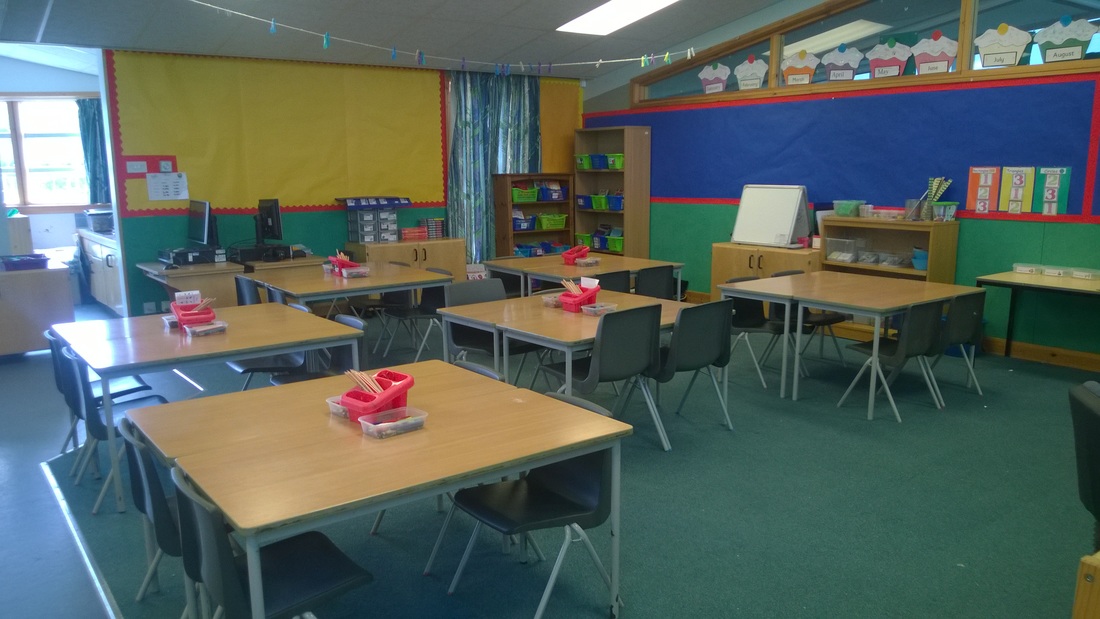

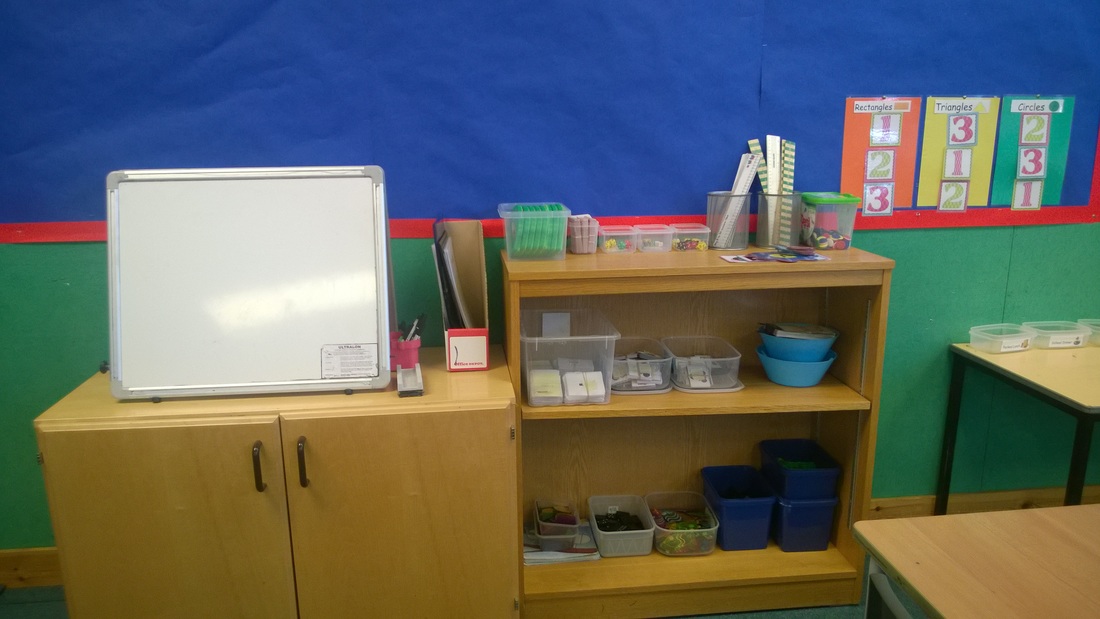


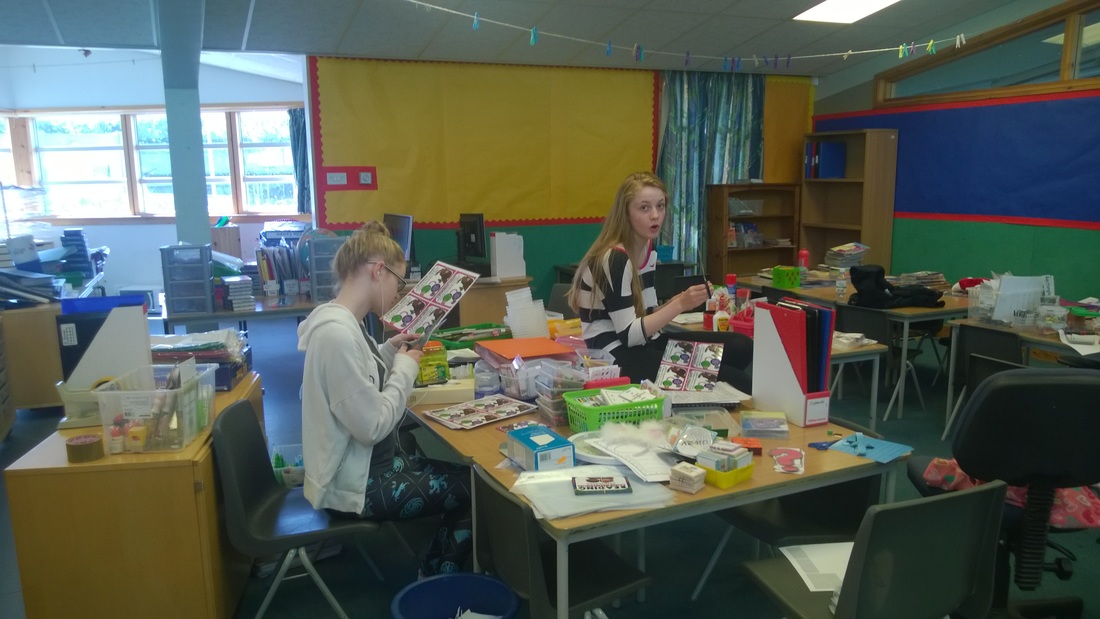
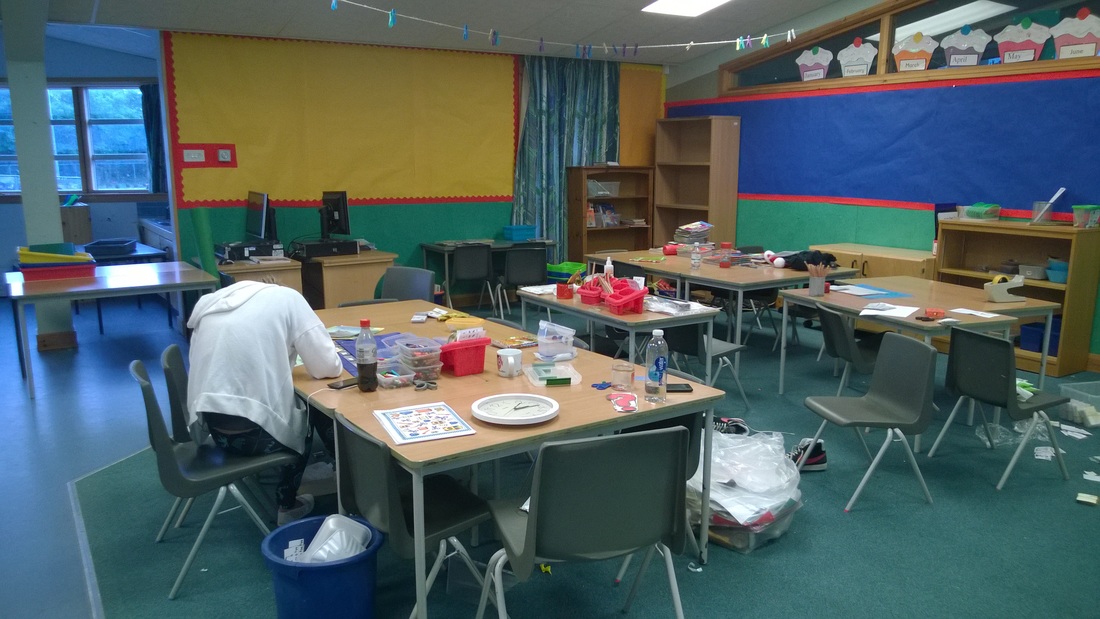



 RSS Feed
RSS Feed